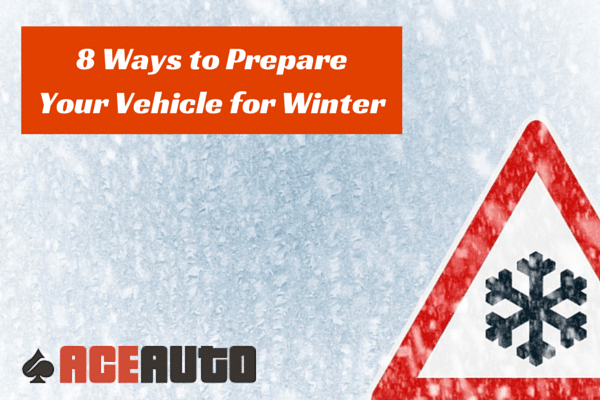
Salt Lake City, Utah is surrounded by the Great Salt Lake and the mountains; this combination makes for a chilly, wet winter. With the temperatures usually below freezing, the roads can become slick quickly. However, the Department of Transportation is also quick about dumping salt and sand on the highways and roads. Unfortunately, for your car, that salt can cause damage your paint or cause rust spots.
It’s important to winterize your vehicle to properly protect you, and you car. How many times have you left work or the grocery store to find a blizzard has arrived or the parking lot has been turned into a skating rink? Winterizing your car is your best defense against Mother Nature’s winter furies.
Let’s take a look at what you need to do to winterize your car for the snow and ice.
Preparing Your Car for Winter
- Windshield Wiper Blades- Inspect and replace front and back wiper blades, and make sure your car has a type of subzero wiper fluid. It’s very difficult to see where you’re driving when your windows have snow or ice on them. The window washer fluid will be beneficial if a car passes you and splatters slush all over your windshield. Windshield washer fluid also helps to melt the ice on the windshields.
- Check Your Tire Pressure– When the temperatures rise and fall, so does the air pressure in your tires. If your tires are not operating at the correct amount of your air pressure, your traction may not be as stable on snow covered roads, and that could cause you to slide off the road or into another car.
- Check Belts and Hoses– Your cars belts and hoses can crack during cold weather. If your fan belt or a hose blows, it could result in damage to your engine. Repairing your engine will cost a lot more to repair than it would to replace belts or hoses. In addition, if you’re out on the road when a belt or hose goes you may find yourself stranded.
- Check Heater and Defrosting Units– If your heater is on the fritz, you are going to be cold while driving to work. If your defrosting units are not working properly, you’re going to have a hard time seeing out your frost covered windshield, which could be hazardous.
- Check Antifreeze Levels– Antifreeze is your car engine's coolant. If your car overheats there is a good chance it will break down. You can check the antifreeze yourself in a few easy steps. 1) Always make sure your engine is cold (to prevent severe burns), 2)locate the radiator, 3)remove the cap and look into the whole. Be sure to refer to your owner's manual to see what type of engine coolant is right for your vehicle.
- Check Your Oil Level– Cold weather can make your oil thick, so make sure you’re using the correct oil viscosity (check owner’s manual). Use the dipstick to check the oil level. To test your oil levels, first place the oil dipstick in the reservoir and pull it out, then wipe with a paper towel and dip again. Read the dipstick by looking to see that oil is in the area of the dipstick with a hash mark pattern. If you do not see oil on the dipstick, or it is below the hash mark pattern, your car is low on oil. If your oil is low on oil, add a quart or 2 until you can get to an auto repair shop to have a complete oil change performed.
Read Why Oil Changes Are Important Here
- Keep an Emergency Kit in Your Car– Put the following items in the kit: An extra heavy blanket, gloves, flashlight and extra batteries, road flares, first aid kit, shovel, salt, sand, chains, jumper cables, whistle to get a passerby’s attention or a fluorescent colored flag, water, and protein bars. Place all the items in a large tote, use the blankets as a protective surrounding for all the other items.
- Protect Your Paint– With all the salt on the roads during the wintertime in Utah, your paint can take a real beating. Be sure to wash your car frequently, and apply a layer of car wax to help make a barrier between the paint and the salt.
Contact a West Jordan, Utah Auto Repair Shop Today
If you need help getting your car ready for winter near West Jordan,Utah, Ace Auto Repair is the place to go.
Read 6 Ways the Cold Affects Your Vehicle (and What to Do About It)
Download PDF


Recent Comments